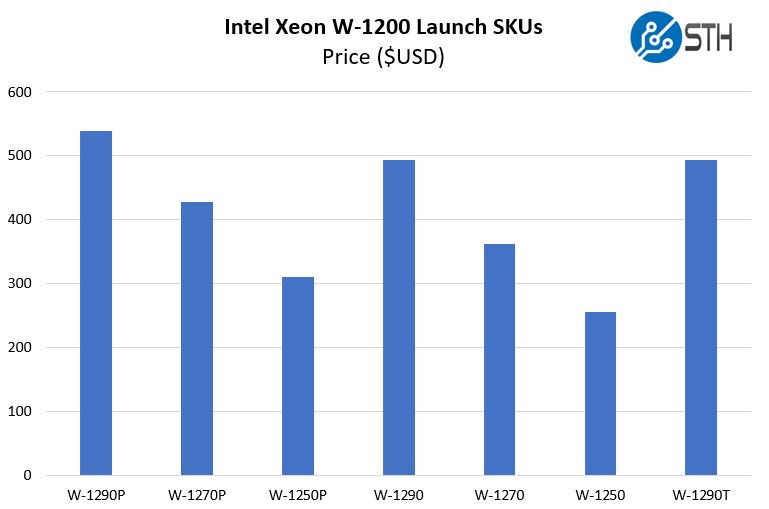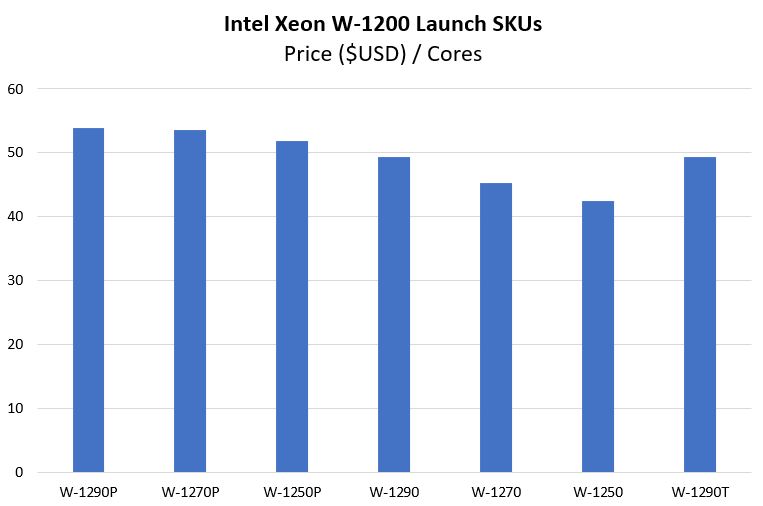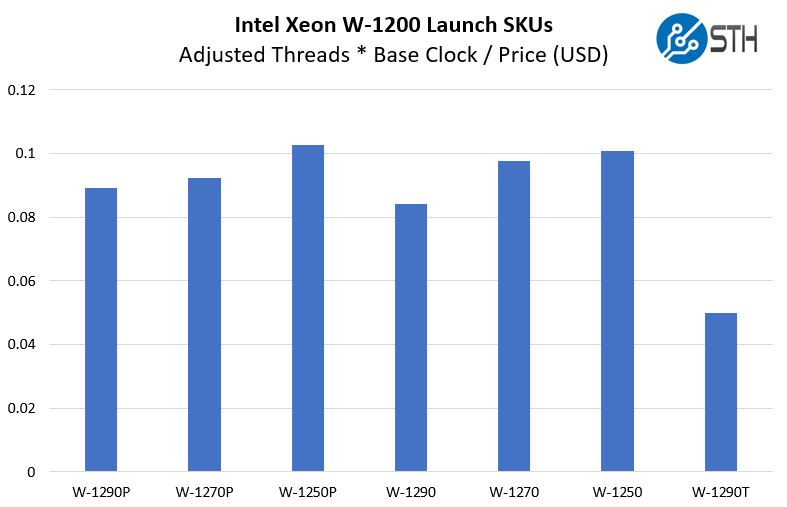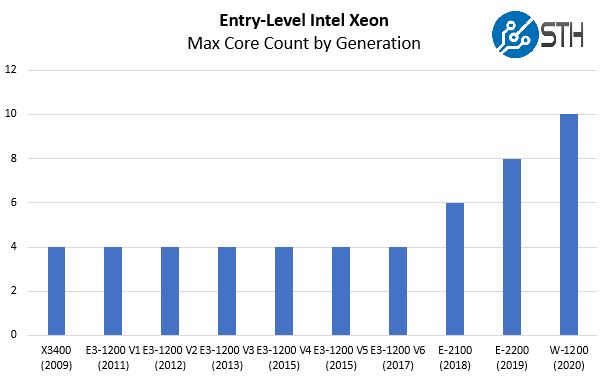Intel Xeon W-1270 Power Consumption
We wanted to post a few figures from our testing that show the real selling point of the chips, low power.
- Idle Power (Performance Mode): 37W
- STH 70% Load: 108W
- STH 100% Load: 134W
- Maximum Observed Power (Performance Mode): 146W
Although the TDP does not translate directly to increased power consumption, the Intel Xeon W-1270 we cannot recommend for extremely power-constrained environments like 1A in 110V or 120V rack deployments. You will run the risk of going outside of power limits in that type of hosting. For the low-cost colocation world, you will want to look lower in the stack.
Note these results were taken using a 208V Schneider Electric / APC PDU at 17.7C and 72% RH. Our testing window shown here had a +/- 0.3C and +/- 2% RH variance. You can read more about the differences in 120V or 208V for Servers, Storage, and Network Equipment. On lower-voltage hosting, we would expect slightly higher power consumption.
Intel Xeon W-1270 Market Positioning
Intel has seven launch SKUs in the Xeon W-1200 series if we exclude the embedded options. Of these SKUs, there are two primary families, the “P” and non-“P” SKUs. The “P” series offers higher power and therefore performance. Intel also has a 35W TDP SKU, the Xeon W-1290T which would be great in something like a Lenovo ThinkStation Tiny model.

Intel has a pricing strategy that captures value from the higher power/ performance SKUs. One can see the “P” series is positioned over $50/ core while the non-P SKUs are $40-50/ core.

Looking at a basic cost metric is a bit misleading. If one simply needs a lower core count and lower performance CPU. If you want performance, you want to see how much compute capacity a chip has, and how much that performance costs. Beyond our benchmarks, we can use a cost per clock and thread metric to look at how Intel is pricing the line:

Here, the Xeon W-1270 is perhaps a better value than its Xeon W-1270P counterpart. At the same time, in the context of an entire system, we can see why Intel went with the pricing methodology that it is using in this line.
When comparing to AMD EPYC and Xeon Scalable lower-end parts, the bigger impact is at a system level. With more memory channels and PCIe lanes, motherboards are more complex and those motherboards cost more. The Intel Xeon W-1200 series still allows one to utilize lower-cost platforms when we take into account costs beyond the CPU.
We showed that the AMD Ryzen series has what it needs from a performance perspective to compete. AMD does not have the systems relationships in the Xeon W-1200’s segment which will limit its appeal there. Also, the Xeon W-1270 is a higher-end 8-core CPU with an iGPU which are not found on the enthusiast Ryzen CPUs so there is a capability gap that will prevent OEMs from using Ryzen for the time being.
Final Words
In our testing, the Intel Xeon W-1270 brings an eight-core 5GHz processor with an iGPU down from $539 in the previous generation to $362 in this generation. Sure the Xeon E-2288G performs a bit better, but the two chips are close enough where we would recommend saving the $177 and taking a small performance hit.
The real reason for that is that the Xeon W-1200 line is feeling pressure from AMD, even if AMD is not directly competing. That competitive pressure on the consumer/ enthusiast side means we get an updated workstation part. For those that think that even with AMD not competing directly in this segment, that there is no impact here is the proof:

2017 is when AMD Ryzen was released. For buyers in this segment, we have seen rapid core count and performance growth. Long gone are 8-12% generational quad-core performance gains. We now get massive gains every year. Of course, the Xeon W-1270 is an eight-core part, not a ten-core part. Our Xeon W-1290P review is next in line and the performance is significantly better.
Overall, the Xeon W-1270’s primary impact is that it dramatically reduces the cost of this eight-core level of performance in the market in order to allow room in the stack for the new ten-core parts. While it may not be a groundbreaking performance part, it does break ground as a better price/ performance option than the Xeon E-2200 series offered.




Graphical Screenshots of Terminalwindows is something for idiots.
Great performance review! Nicely done.
What would be interesting to see is the boost behavior compared to a 10700.
Wondering if the Xeons are more focused on high-load scenarios compared to their Core i7/i9 counterparts.
Why does this article compare w-1270 with e-2288g? Why ignore the e-2278g which has identical 3.4g base freq, identical 5.0 single core turbo, identical 14nm++++ and identical 80w tdp? What is the difference between these two seemingly identical chips? E-2288g at 95w isn’t really relevant here.
mostly the w1270 requires a new chipset and thus a new mainboard. which is a shame since it’s basically the same silicon as a e2278G…
How does the W-1270 compare to W-2245? I cannot see how/why W-2245 is superior.